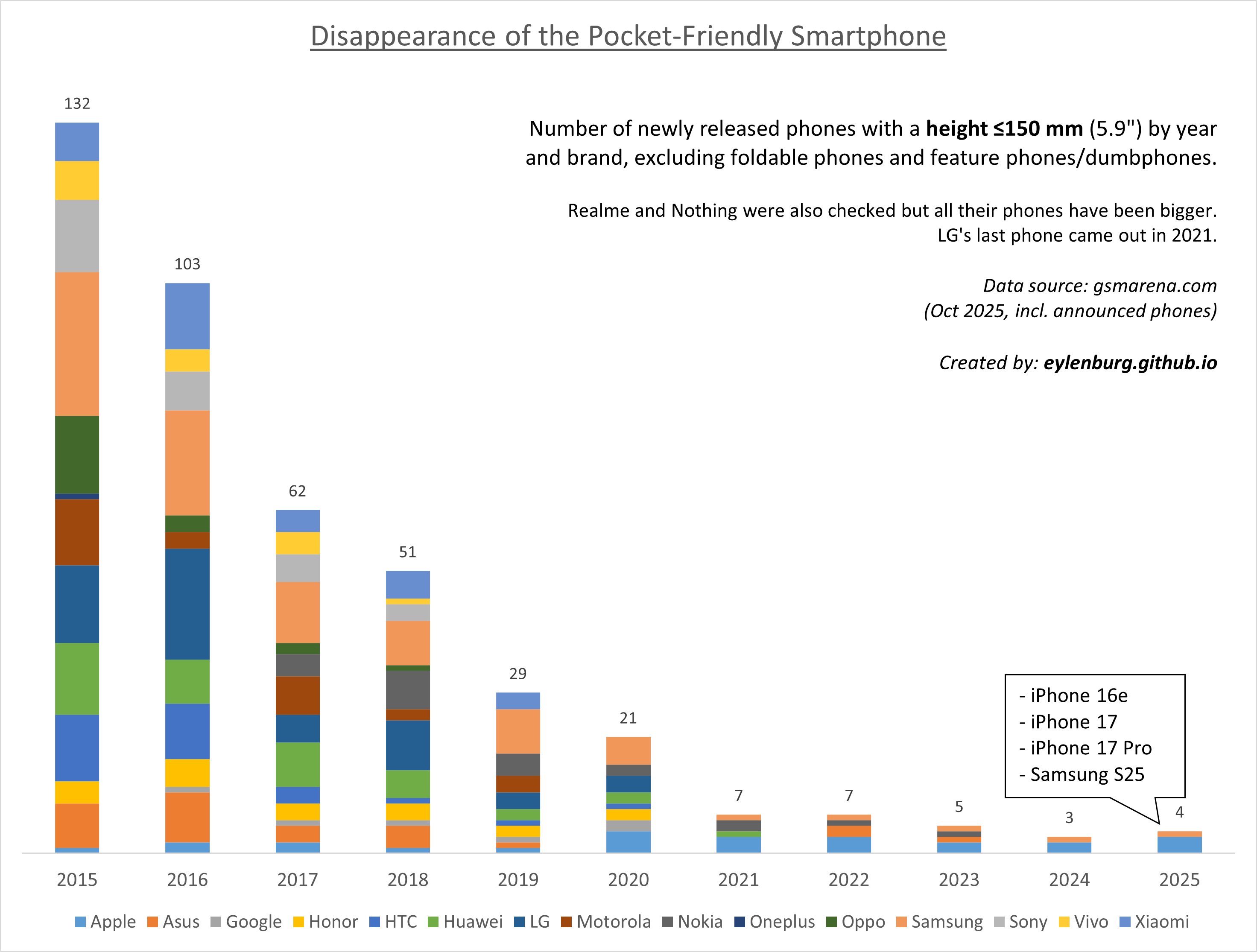Published: October 2025
The last "small" iPhone was the iPhone Mini 13 (131.5 mm height, 64.2 mm width, 140 g weight) which was released in 2021, and the last "small" mainstream Android phone was the Sony Xperia XZ2 Compact (135 mm height, 65 mm width, 168 g weight) which was released in 2018. Both did not have a successor model. Neither did any other major company release a small phone, there's only been some extremely niche devices like the Unihertz Jelly.
But not only did small phones disappear from the market, so did "normal-sized" phones - around the size of a base model Apple iPhone or Samsung S series. It might be fine if you're wearing a jeans, cargo shorts, or a handbag, but the other day I was wearing a suit and my Pixel 8 (150.5 mm x 70.8 mm) was not fitting in the trouser pocket without "pinching" my hip bone at every step because the pocket wasn't long enough for the phone to fully fit. Same problem with the chest pocket inside the jacket. Turns out the Pixel 8 is already the smallest Pixel model out of the 6-10 series - and about a cm shorter than most phones on the market!
I was curious so I went on GSMarena.com and filtered phones for a maximum height of 150 mm, which is slightly arbitrary but still includes the two flagship phone series - the base model Apple iPhone or Samsung S series. To be fair, width and weight are also very important, but I didn't want to overcomplicate it and screen size is meaningless due to different screen-to-body ratios. I excluded foldable phones and dumbphones / feature phones and then checked the releases by year and brand.

(Click to open in new tab)
The result shows that the number of new "not huge" phones (I don't dare to say "small", that would be something like the iPhone Mini) has consistently decreased between 2015 and 2020 from 132 to 21 new phones. Since 2021, pocket-friendly phones have become very rare, with only 3-7 models per year. 2023 was the last year in which Asus (Zenfone 10) and Nokia (C02, a budget phone) released phones with a maximum height of 150 mm. In 2024 and 2025, Apple and Samsung have been the only manufacturers still releasing normal-sized smartphones.
I wondered if Covid had anything to do with phones becoming so big since 2021 in particular, but if anything I would have expected the opposite - with people staying more at home due to lock down, they should logically spend relatively more time browsing on a computer (laptop/desktop) or watching on a TV rather than having to do it on their phone. Seems that the opposite happened for some reason. Or maybe it's not the consumers' fault, but the manufacturers. I'm not sure if the increasing phone size is a result of changing demand (i.e. people not buying small phones) or a result of changing supply (e.g. big phones have higher profit margins and manufacturers have "colluded" to kill the pocket-friendly phone). What do you think?
Update:A few days after I published this, someone created the Interactive Small Phone List, also using 150 mm height as the cut-off criterium. This website also includes smaller manufacturers like Unihertz. Please have a look!